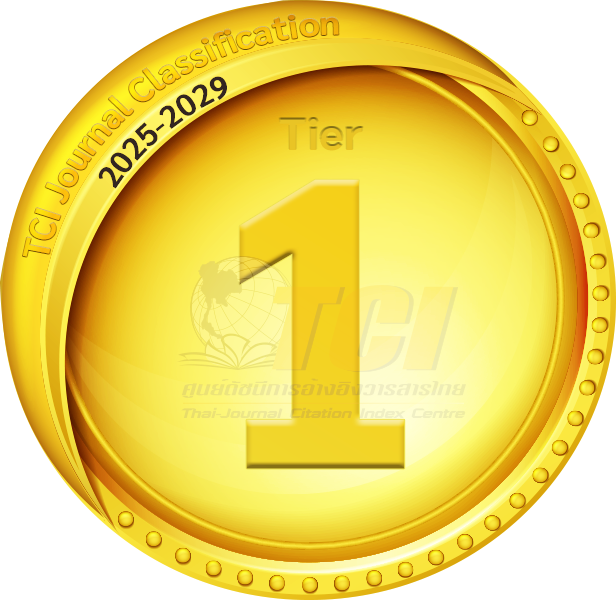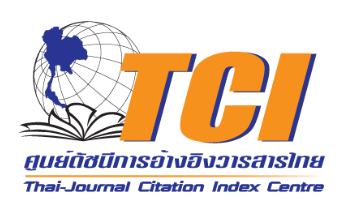Integrating Digital Innovation and Ethnic Identity in Tai Lue Craftsmanship: A Co-creation Approach for Cultural Preservation and Tourism
DOI:
https://doi.org/10.69650/jcdrhs.2025.774Keywords:
Digital Innovation, Co-creation, Cultural Preservation, Tai Lue Craftsmanship, Design Thinking, Community Participation, Tourism SouvenirsAbstract
This study investigates the integration of digital innovation and co-creation approaches to transform Tai Lue craftsmanship, focusing on cultural preservation, ethnic identity expression, and economic sustainability. Using a qualitative research methodology, the project engaged the Tai Lue community of Ban Luang Nuea, Doi Saket, Chiang Mai, through participatory design thinking workshops. Artisans collaborated with designers to create modern lifestyle products, including fashion accessories and home décor, by incorporating traditional Tai Lue cultural motifs enhanced through digital design and printing technologies. The study addressed the challenges of appealing to younger and international markets while empowering aging artisans to develop value-added products for the tourism sector. Findings reveal that blending modern digital tools with traditional craftsmanship can effectively preserve cultural heritage, stimulate community pride, and generate new economic opportunities. The research demonstrates that co-creation not only sustains cultural authenticity but also enhances the commercial viability of traditional crafts, contributing significantly to the development of creative economies.
References
Bendix, R. (2008). Heritage between Economy and Politics: An Assessment from the Perspective of Cultural Anthropology. In L. Smith, & N. Akagawa (Eds.), Intangible Heritage (pp. 253-269). London: Routledge Falmer. https://doi.org/10.4324/9780203884973-20
Brown, T. (2009). Change by Design: How Design Thinking Transforms Organizations and Inspires Innovation. New York: HarperCollins.
Chunthone, V. (2019). The Development of Hand-woven Textiles: The Change of Appearance and Function, A Case Study from Ratchaburi Province. Journal of Fine Arts, 10(2), 159-179. Retrieved from https://so02.tci-thaijo.org/index.php/fineartsJournal/article/view/141923
Chunxiao, C., & Tingyue, K. (2010). Research on the Development of Tourism Souvenirs Based on Experience Design. In 2010 International Conference on System Science, Engineering Design and Manufacturing Informatization, November 12-14, 2010 (pp. 174-176). Washington, DC: IEEE Computer Society. https://doi.org/10.1109/ICSEM.2010.53
Cross, N. (2011). Design Thinking: Understanding How Designers Think and Work. Oxford: Berg Publishers. https://doi.org/10.5040/9781474293884
Gordon, B. (1986). The Souvenir: Messenger of the Extraordinary. The Journal of Popular Culture, 20(3), 135-146. https://doi.org/10.1111/j.0022-3840.1986.2003_135.x
Gronlund, M. (2017). Contemporary Art and Digital Culture. New York, NY: Routledge.
Jansen-Verbeke, M. (1991). Leisure Shopping: A Magic Concept for the Tourism Industry? Tourism Management, 12(1), 9-14. https://doi.org/10.1016/0261-5177(91)90024-N
Jarmai, K., & Vogel-Pöschl, H. (2020). Meaningful Collaboration for Responsible Innovation. Journal of Responsible Innovation, 7(1), 138-143. https://doi.org/10.1080/23299460.2019.1633227
Jin, H., & Peng, W. (2009). Study on Product Design and Development Based on Design Knowledge Base. In 2009 Second International Symposium on Computational Intelligence and Design, Changsha, China, December 12-14, 2009 (pp. 463-466). USA.: IEEE. https://doi.org/10.1109/ISCID.2009.123
Jintapitak, M. (2023). Equivalent of Character Design for Design Thinking in Personal Character Design Process. In The 8th International Conference on Digital Arts, Media, and Technology and the 7th ECTI Northern Section Conference on Electrical, Electronics, Computer, and Telecommunications Engineering (ECTI DAMT & NCON 2023), Phuket, Thailand (pp. 16-20). http://doi.org/10.1109/ECTIDAMTNCON57770.2023.10139327
Jintapitak, M. (2024). Digital Threads of Heritage: Integrating Lanna Ethnic Identity into Character Design. In The 9th International Conference on Digital Arts, Media, and Technology and the 7th ECTI Northern Section Conference on Electrical, Electronics, Computer, and Telecommunications Engineering (ECTI DAMT & NCON 2024), Chiang Mai, Thailand (pp. 348-352). USA.: IEEE. https://doi.org/10.1109/ECTIDAMTNCON60518.2024.10480051
Liedtka, J. (2018). Why Design Thinking Works. In Harvard Business Review. Retrieved from https://hbr.org/2018/09/why-design-thinking-works
Luo, G., Lin, L., & Li, A. (2021). Cultural and Creative Tourism Product Design Strategies to Enhance the Brand Value of Intangible Cultural Heritage Under Artificial Intelligence Technology: Focused on Grass Cloth Embroidery Example. In 2021 International Conference on Forthcoming Networks and Sustainability in AIoT Era (FoNeS-AIoT), Nicosia, Turkey, December 27-28, 2021 (pp. 160-167). USA.: IEEE Xplore. https://doi.org/10.1109/FoNeS-AIoT54873.2021.00042
Manzini, E. (2015). Design, When Everybody Designs: An Introduction to Design for Social Innovation (R. Coad, Trans.). Boston, MA: MIT Press. https://doi.org/10.7551/mitpress/9873.001.0001
Markwick, M. (2001). Tourism and the Development of Handicraft Production in the Maltese Islands. Tourism Geographies, 3(1), 29-51. https://doi.org/10.1080/14616680010008694
Matanboon, W. (2017). Thread Lines Fabric Patterns Tai Lue Wisdom, Vol. 1. Chiang Mai: Lan Na Tai Ethnic Learning Center, Social Research Institute.
Norman, D. (2023). 16 Design, Products, Sustainability, and the Circular Economy. In Design for a Better World: Meaningful, Sustainable, Humanity Centered (pp. 131-137). Cambridge, MA: MIT Press.
Palomo-Domínguez, I., Elías-Zambrano, R., & Álvarez-Rodríguez, V. (2023). Gen Z’s Motivations Towards Sustainable Fashion and Eco-friendly Brand Attributes: The Case of Vinted. Sustainability, 15(11), 8753. https://doi.org/10.3390/su15118753
Prangwattanakul, S. (2008). Cultural Heritage of Tai Lue Textiles. Chiang Mai: Department of Thai Language, Faculty of Humanities, Chiang Mai University.
Pressman, A. (2019). Design Thinking: A Guide to Creative Problem Solving for Everyone. New York: Routledge.
Ulrich, K. T., & Eppinger, S. D. (2008). Product Design and Development (4th ed.). New York: McGraw-Hill.
Utara, V., & Rattanarungsikul, P. (2024). Tai Lue Ethnic Textile Patterns: Semiotics and Social Role, A Case Study of Tai Lue, Chiang Kham, Phayao. Journal of Humanities and Social Sciences Review, 26(2), 166–191. Retrieved from https://so05.tci-thaijo.org/index.php/hspbruacthjournal/article/view/277661
Yang, K. (2024). Quality by Design and Innovation. In Quality in the Era of Industry 4.0: Integrating Tradition and Innovation in the Age of Data and AI (pp. 57-118). USA.: Wiley & Sons. https://doi.org/10.1002/9781119932475.ch3
Zhou, C. J., & Hu, P. F. (2021). Design Strategy of Rural Handicraft Products Based on Kano Model. In 2021 International Conference on Computer Technology and Media Convergence Design (CTMCD), Sanya, China, April 23-25, 2021 (pp. 54-57). USA.: IEEE. https://doi.org/10.1109/CTMCD53128.2021.00020
Downloads
Published
How to Cite
Issue
Section
License
Copyright (c) 2025 Journal of Community Development Research (Humanities and Social Sciences)

This work is licensed under a Creative Commons Attribution 4.0 International License.









